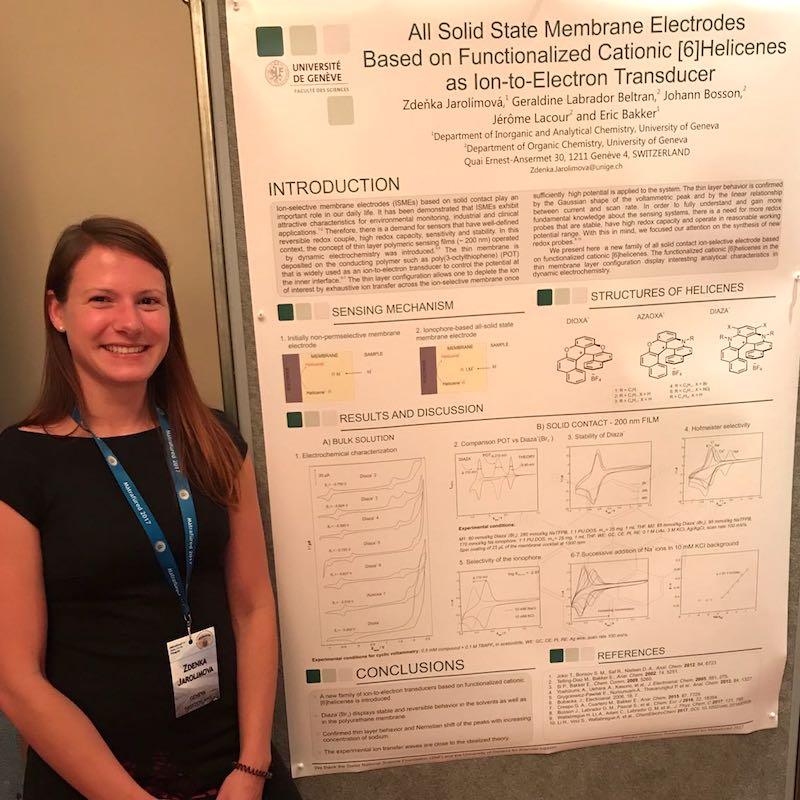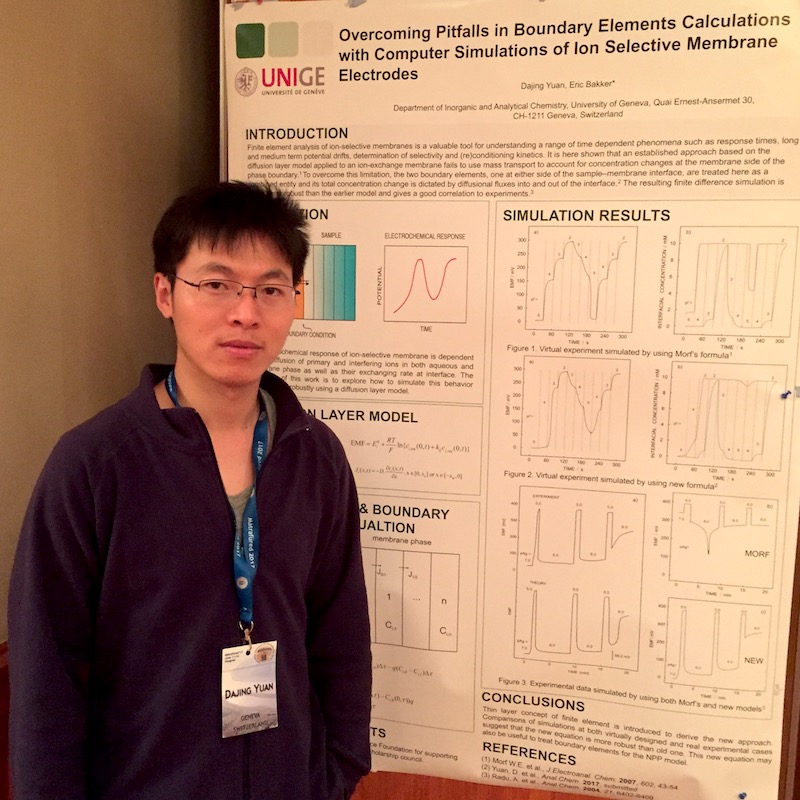

Zdenka Jarolimova, Nadezda Pankratova and Dajing Yuan (from left to right)
Conference report for DAS travel award. Summary of the conference highlights
Participants supported by DAS travel award: Zdenka Jarolimova, Dajing Yuan, Nadezda Pankratova, all University of Geneva
Conference: Mátrafüred 2017, Conference on Electrochemical Sensors
The Conference "Mátrafüred 2017" on Electrochemical Sensors is a continuation of the symposium series on ion-selective sensors and bioelectroanalysis organized regularly since 1972. The conference is organized every three years and we greatly appreciate the opportunity to have been part of it, for two of us it was the second time during our PhD research. It was a great opportunity, when having been working in the field of electrochemistry for three years or more, to meet the big scientists whose publications served as a bases of our scientific research.
This amazing event brought together scientists working in the fields of electrochemical sensors as well as optical sensors with special emphasis on interfacial phenomena, molecular recognition, bioanalysis, miniaturization and portability. It is one of those family-like conferences where people are eager to share knowledge and present the young scientists to the rest of the scientific community.
Unlike in some other conferences, where the topics are sometimes being too diverse and at times too far from the field of interest, this event is mainly focused on the field of electrochemistry. It allowed us to be more easily integrated into the discussions, to get some inspiration from the given talks and presentations and new ideas for our future work.
The scientific program included invited lecturers talking about various type of sensing based on molecularly imprinted polymers, aptamers, Clark-type sensors, silica films, polymeric films, electrochemiluminescent compounds, dyes, nanoporous composites. Different new types of solid contact materials were suggested for ion-selective electrodes. The results of important theoretical and practical studies of polymer-based electrochemical sensors were presented, such as synchrotron radiation-X-ray photoelectron spectroscopy, near edge x-ray absorption fine structure studies, Raman spectroscopy, potentiometric scanning electrochemical microscopy and others.
Many talks were dedicated to very practice-oriented research solutions for biomedical applications. Portable and disposable designs of sensors were suggested for performing measurements of analytes in environmental samples, biological fluids (blood, sweat, urine, saliva, and tears) and food products (milk), as well as new tools for diagnostics, e.g. non-invasive methods. New advances in microfluidic system design were widely represented in the poster session.
Recent achievements in theoretical approaches to the description of various electrochemical systems were highlighted in the talks as well as in the poster sessions. The poster sessions were held in in the evenings and gave a rare opportunity to share the results of our work with very well-known scientists from our field as well as young researchers from many different countries. We would like to acknowledge the special attention given by the organizers to the poster sessions and high interest of the participant of this family-like event in the research of young scientists. The two hours of poster session every evening (we participated in the one the very first day) provided sufficient time for interesting discussions and allowed for getting valuable advices from specialists in the field. Moreover, the joined meals as well as multiple coffee breaks between the talks gave us the opportunity to get to talk to lecturers and presenters in a more informal atmosphere.
We highly appreciate the given opportunity and thank the DAS board for supporting our participation in this outstanding event!
Zdenka Jarolimova, Dajing Yuan, Nadezda Pankratova

